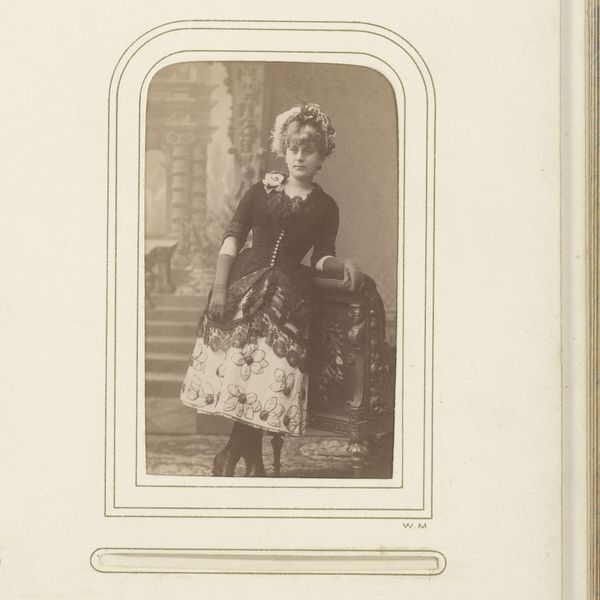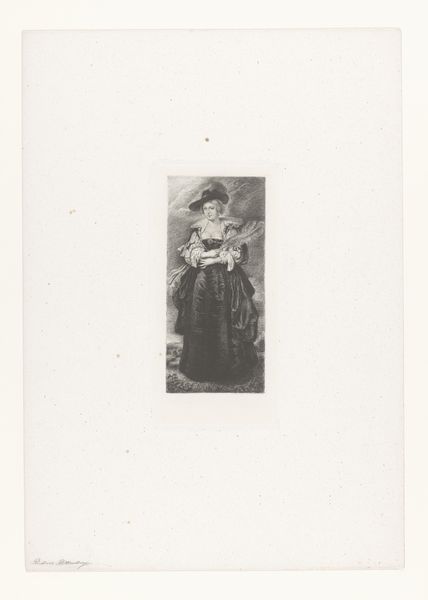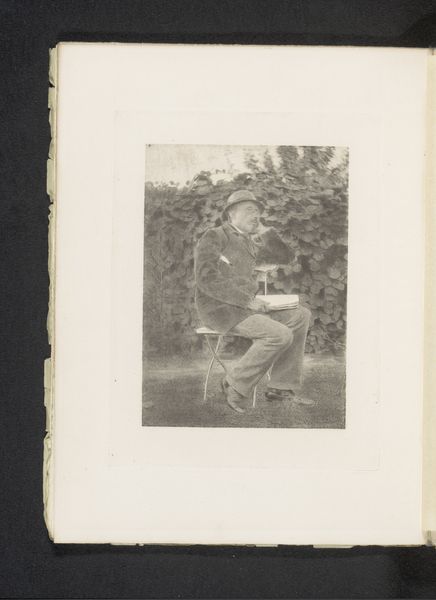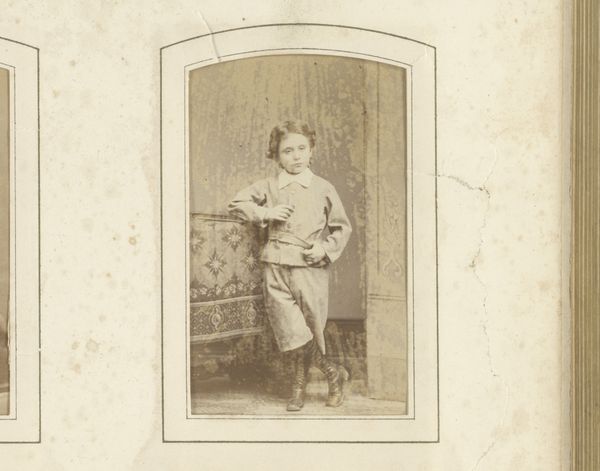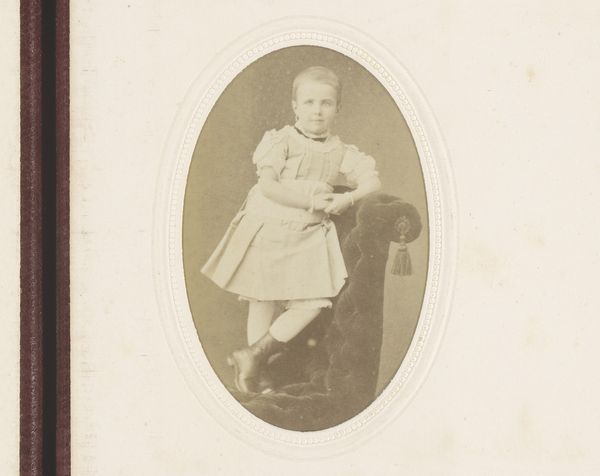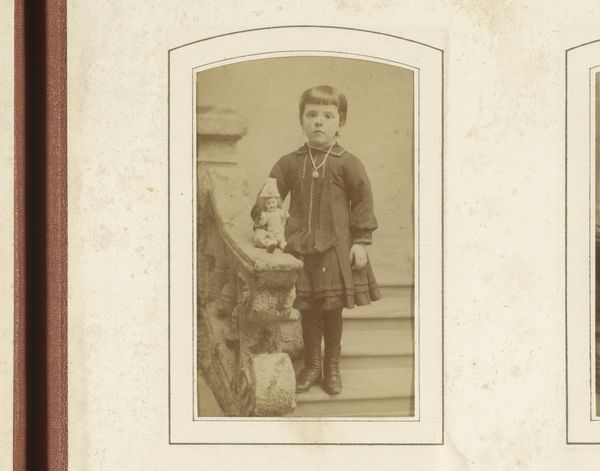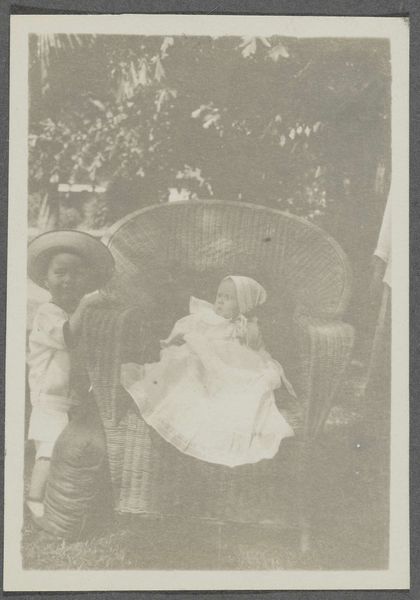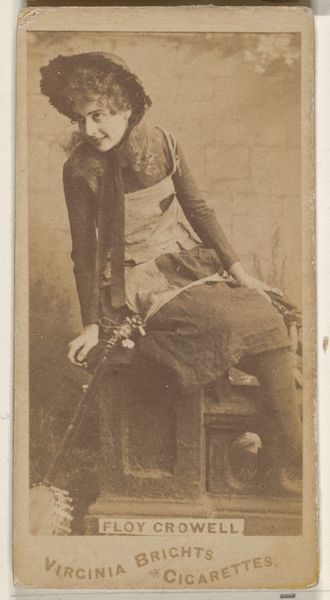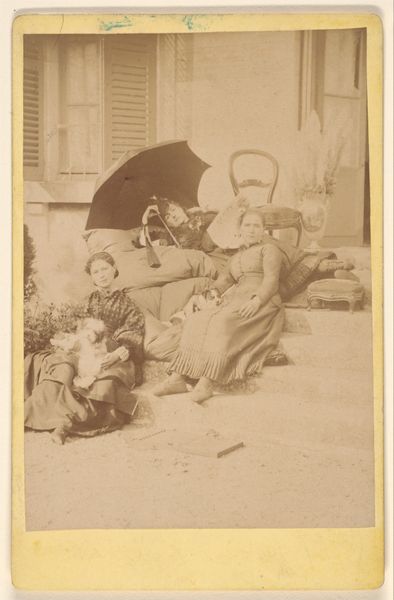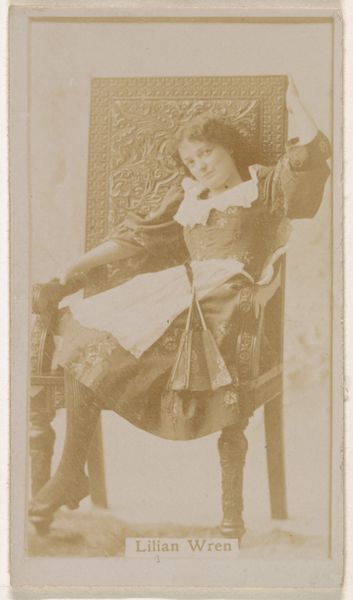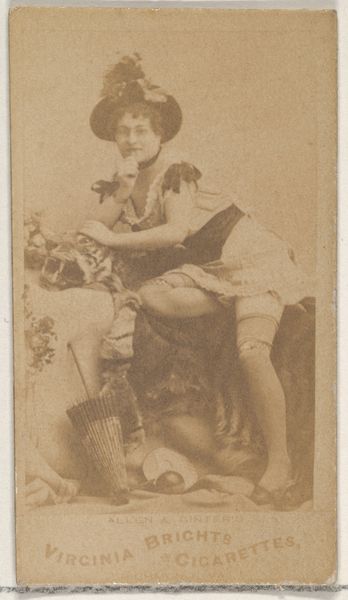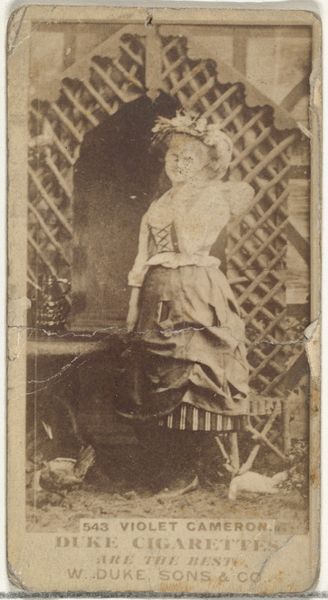
photography, gelatin-silver-print
#
portrait
#
print photography
#
landscape
#
archive photography
#
photography
#
gelatin-silver-print
#
realism
Dimensions: height 226 mm, width 170 mm, height 269 mm, width 199 mm
Copyright: Rijks Museum: Open Domain
Editor: This gelatin-silver print from 1896, titled "Jongen te paard, van opzij gezien" - or "Boy on horseback, seen from the side" - captures a quiet moment. I’m really struck by the formal pose and the muted tones of the photograph; it’s simultaneously intimate and detached. What do you make of this photograph? Curator: What strikes me is how carefully this image seems to have been constructed for a particular social purpose. Consider the context: Late 19th-century Europe, photography is increasingly accessible, yet still imbued with a certain sense of formality. We see a young boy, likely from a privileged background given the horse and tailored clothing. He is positioned not in a candid shot, but posed in front of what seems to be a grand house. Does that change how you perceive the "quiet moment" you mentioned? Editor: That's a great point! I initially focused on the immediate scene, but now I see it’s not just about the boy and his horse. It's a carefully constructed image meant to convey something about his family's status. It almost feels like a carefully managed press release from over a century ago. What kind of values were such families trying to promote in society? Curator: Exactly. Images like this helped reinforce a particular social order. They project ideals of stability, wealth, and tradition—qualities valued by the upper classes. Consider how photographs like this circulated within social circles and how that impacted societal hierarchies and political power dynamics. What’s your perspective on the effect such carefully created photography may have had in that period? Editor: Now I understand better that seemingly simple portraits served specific social functions and helped reinforce particular power structures. It also raises interesting questions about the role of photography in constructing and perpetuating those images. Curator: Indeed. And reflecting on those questions helps us critically analyze how visual representation continues to influence society today.
Comments
No comments
Be the first to comment and join the conversation on the ultimate creative platform.
